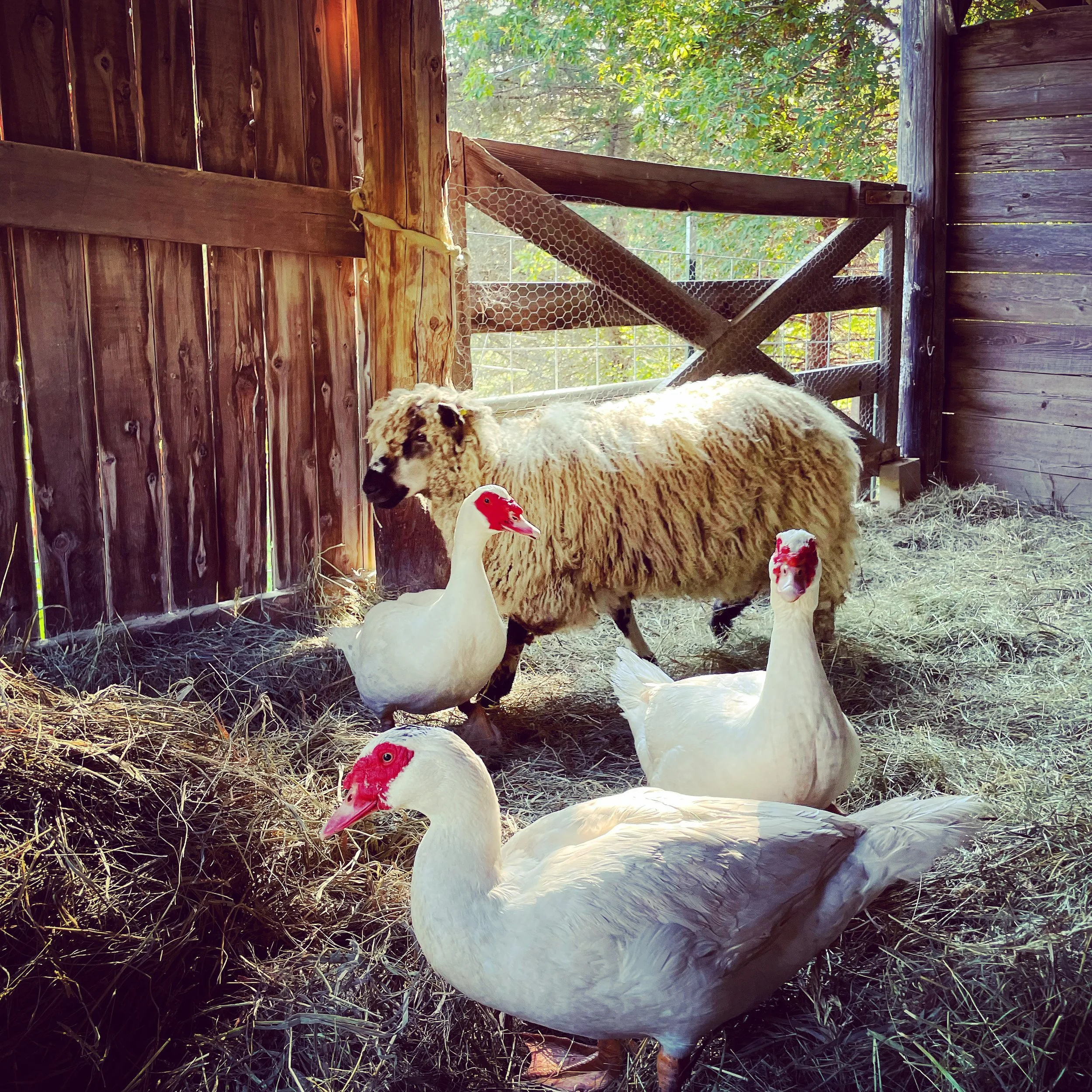written by Phoebe Eisenbeis
Orchard Acres Textiles
How did you get into farming and shepherding, what was your path to this moment now?
Growing up, everybody did crochet - making and creating was always part of our lives, quilting and all kinds of things. I learned tatting when I was little. When we were living in Portland I wanted to buy my grandmother some yarn and the people were knitting there and I thought “I can do this!” I taught myself how to knit, that was nineteen years ago. I love it. I love everything about it. When we moved here (Rochester, MN) we were able to purchase some property that had some land and a barn and pastures, it’s not a lot of land it’s 5 acres. It was during COVID and all my kids were home, we had just moved here so we knew no one and I started researching and having all this fiber delivered to my house from different sheep breeds and I fell in love with the Teeswater sheep. I did research and we ended up getting our animals from all over the U.S. so we could continue breeding them and increasing their numbers.
Why did you get involved with Three Rivers Fibershed? And can you talk a little about how you align with the mission and goals of the Fibershed?
I felt connected to the idea of the fibershed even before I had sheep. I was really into the Fibershed in California and I thought that was so interesting. It was about the beginning of the Three Rivers Fibershed when we moved here and that was one thing that I wanted to be a part of from the beginning. I wanted to learn how to spin yarn and Teresa Bentz was hosting an event before she had her mill even, I connected with all these Fibershed people. Even though everyone in the Fibershed lives so far away, I’m not used to everyone living so far away, I feel like they’re all friends and it feels like we’re all in the same town with the way the zoom calls are or the festivals we go to.
With our land, no one had taken care of the pastures so we had a local organization assess our property to see what we could do to bring back some of the native plants and feed the animals well off of the land. Since the drought that has gone out the window though and we’re feeding them hay. As far as the Fibershed, I feel like ever since I got involved I’m more into where your wool comes from, how something is made, it really makes you think about all the waste.
What are some highlights for you as a fiber farmer? Do you have a favorite aspect?
I just love the animals. I feel like everytime I go down there, there is a new baby of some sort (not the sheep, the sheep we have under control). Yesterday we had 6 baby chicks born. It’s a bit crazy and can be a bit overwhelming. My favorite time of year is when it is -20 outside, I love Minnesota winters and I love going out there when it’s just frigid. That’s my favorite part, taking care of them in the winter. We also have two guardian dogs, Samson and Luna and they’re wonderful. I feel like this was always what I was supposed to be doing I guess.
What is something unique and exciting about your breed of fiber animal?
When the yarn came in the mail I was very excited about it, I liked the look of it, the sheen, the feel, and the long locks, and the uniqueness of the sheep. They can live for a long time and breed for a long time. They’re also really good moms.
How do you process the wool?
We had a sheep shearing party in March, 9 fleeces, I skirted them, washed them, and dyed some of the locks of wook and then took them up to Theresa mill to make into roving and then yarn. It was very exciting, I learned so much about wool and the process from this. The kids asked why our house always smelled of wet wool! I enjoyed the whole process, how to skirt, how not to felt the locks of wool, and how to apply natural color to the fleece. I am very much looking forward to fall shearing!
Are there any crafting projects you’re working on right now that you’re excited about as we head into fall/winter?
My current project is the Sheep to Shawl project, using our wool mixed with wool from other Fibershed farms, I love that this is my first project with my wool and other local longwool sheep. I am also enjoying natural dyeing and all the aspects of that! Overdyeing, and using many different natural dyes, from our farm acorns and black walnuts, local onion skins. Onion skins give the most amazing color. I also fell in love with Sumac, Indigo (my heaven would smell of an Indigo vat! i love the smell), and marigolds! You can do so much with natural dyes and wool! You are living your art, taking care of the animals, finding color on your farm, and working hard to process it into something that will keep you warm and all of it was done by your own hands.

























